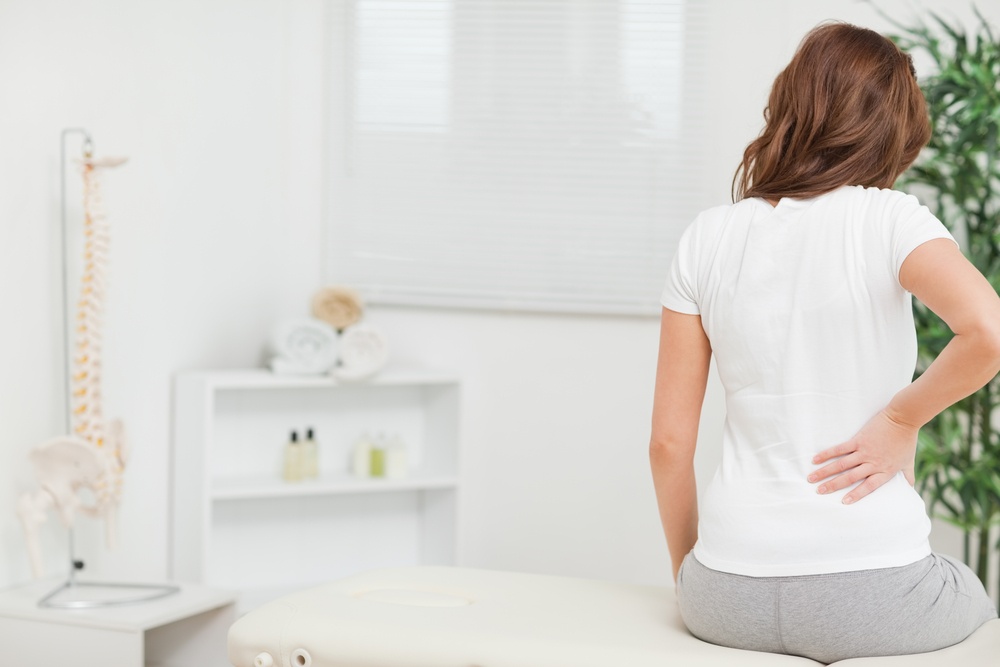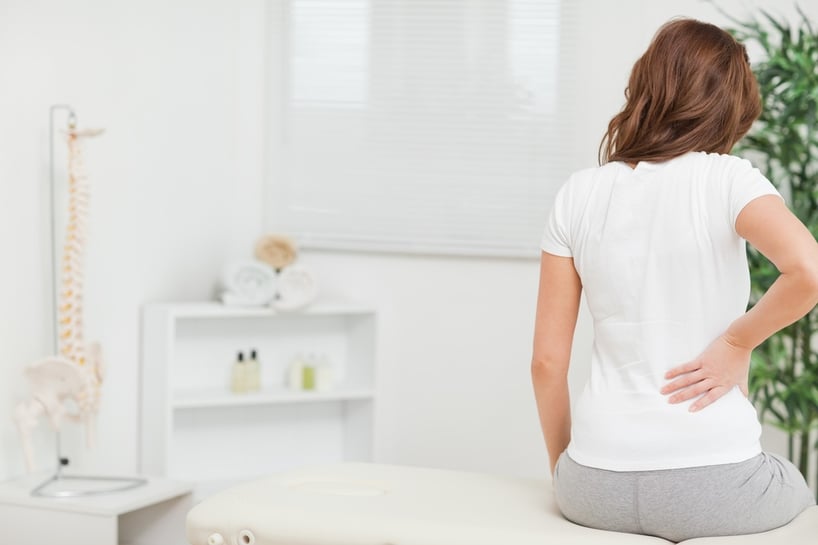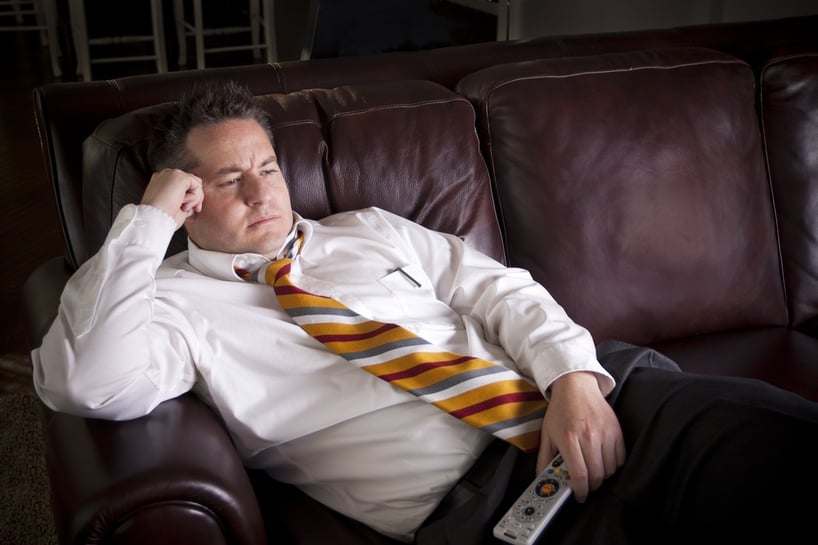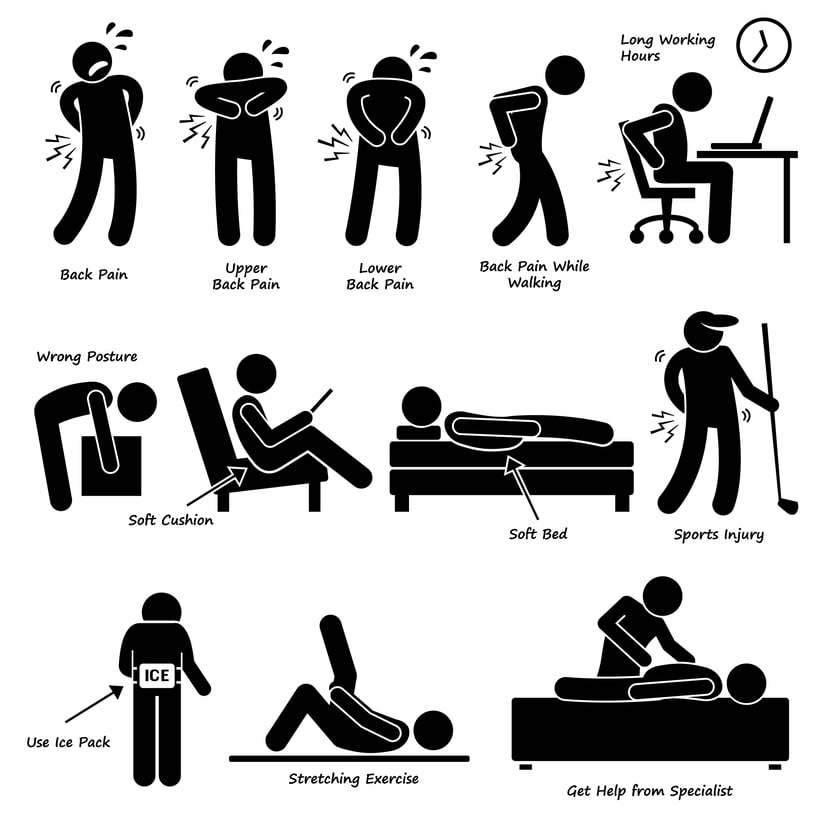Lower Back Pain: Causes, Reasons, and Relief
April 28th, 2017 | 6 min. read


At some point or another, most of us--about 80% of all adult Americans, according to the National Institutes of Health--experience lower back pain. It’s the single biggest cause of worker disability, and it leads to more missed work days than any other medical complaint. It’s also ranked as the third biggest cause of poor health and mortality in the U.S., right behind heart disease.
If you’ve experienced lower back pain at any point in the last three months, you’re not alone. The NIH reports that one in four adults has been there, too. Lower back pain is more than just annoying and disruptive--it’s a serious health challenge that can negatively affect your quality of life and longevity if you ignore it. Why? Because if you’re not exercising or moving around because you’re in pain, your cardiovascular health, your sleep, and your state of mind can suffer.
Untreated back pain can spiral into other illnesses, which is why it’s important to get to the source of what’s causing yours--and look for ways to improve it.
What Is Lower Back Pain Exactly?
Lower back pain is a term that includes subacute pain (lasting 4–12 weeks) and chronic pain (lasting 12 weeks or longer--often up to a year). The pain is usually centered on the lowest five vertebrae of the back: the lumbar vertebrae, L1 to L5. This lumbar region of the back supports most of your upper body weight, and is therefore subject to a lot of stress, even when sitting.
Anatomically the lower back is made up of bone (five vertebrae), muscles, ligaments, tendons, and a complex network of nerves that branch out from the spine and control body movements and signals to the brain. Because so many systems converge in the lower back, pain can have numerous underlying causes. It can be:
- Bone-related
- Muscle-related
- Tendon-related
- Ligament-related
- Nerve-related (and nervous-system related, which includes pain signals passing to and from the brain)
Pain can also be referred to the lower back from injuries in other parts of the body. This is called referred pain.
Why Is Lower Back Pain So Common?

Because it supports the weight of the spine and everything above the hips, the lower back is subject to a large load of stress. Add to this burden the few extra pounds that can come with middle age, plus age-related degeneration of the spine, plus a sedentary modern lifestyle and poor seated posture (sitting in an office chair, gazing at a computer for 40 or more hours per week; then slouching on a couch or recliner, binge watching TV shows or sports), and you have a recipe for compressed vertebrae, tight muscles, and weekend warrior injuries.
Our modern sedentary lifestyle is probably the biggest single, controllable contributor to lower back pain. Sitting for most of the day, usually with poor posture in an ergonomically incorrect chair, is a recipe for weak or tight muscles. When you finally get up and move around, your body isn’t properly conditioned or warmed up for exertion. These conditions make muscle strains and spasms more likely, especially if you’re over 40. (Injuries of all kinds are more common over 40, for both women and men.)
The bottom line: most low back pain is mechanical in origin, with normal wear and tear as the cause. As we age, the vertebrae and the padding between them become damaged and inflamed, leading to soreness, stiffness, and other mobility issues. Chances are, if you’re Googling “lower back pain” right now, you are likely dealing with chronic, persistent aches and pains that come from getting older.
Lower Back Pain Causes (Most Common)

But what are the actual mechanical causes of low back pain? Some of the most common include:
- Acute or traumatic injuries. Car or motorcycle accidents, serious falls, and sports injuries like collisions or sudden twisting motions can all damage the lower back. Pain may be from a small tear, a strain, or from spinal compression. (Under force, the discs of padding between the vertebrae can slide out of place or even rupture. This may increase pressure on surrounding nerves in the spinal cord, which can lead to inflammation, irritation, or conditions like radiculopathy.)
- Disc degeneration. As we age, the rubbery padding between vertebrae can wear away. When we lose this natural cushion between the bones, the spine can lose height and flexibility. When bone rubs on bone, inflammation occurs, leading to pain and stiffness, especially when bending or twisting.
- Herniated, ruptured, or bulging disk. If the discs between your vertebrae (intervertebral discs) become compressed, they can sometimes rupture or herniate, making their insides bulge outward--much like a gel-filled ball if you were to press down on it with your hand. This “slipped disc” is painful on its own, but it can cause additional discomfort and numbness in the back or legs if it presses against a nerve.
- Muscle spasms. Lower back spasms may occur if you’ve injured soft tissue in your back--for example, when doing heavy lifting, or when twisting or rotating your trunk suddenly. (Think running and turning to catch a football, or swinging too hard when golfing or playing baseball.) Arthritis can also be a cause, as can bulging or ruptured discs.
- Muscle strains or ligament sprains. Most acute lower back pain is caused by soft tissue injuries. Twisting, lifting heavy objects, or overstretching can cause you to “pull something” (a ligament, tendon, or muscle), resulting in a sharp, localized pain that makes it difficult to use your back.
- The added weight gain from pregnancy, along with the expansion of the uterus, puts pressure on the lower back. (Similarly, weight gain from obesity can put pressure on the lumbar region.)
- This is irritation of a spinal nerve root. It’s usually caused by injury, compression, or inflammation. Radiculopathy is sometimes caused by spinal stenosis (the narrowing of the spinal column) or a disc rupture or herniation. The primary symptom is a radiating pain or tingling that travels up and down the length of the nerve, often to other parts of the body. (Sciatica is one type of radiculopathy.) Radiculopathy symptoms are common in the lower back and the neck.
- When the sciatic nerve or one of its branches in the lower back is compressed--often by a herniated or slipped disc, but sometimes by a cyst or tumor--a burning, zapping, or tingling nerve pain may radiate from the buttocks and down the back of the leg. If the pressure is severe enough, sometimes patients may have muscle weakness or numbness as well. Sciatica pain is a little different from other lower back issues in that it normally manifests with pain in the legs or feet, not the back.
- Spinal stenosis. This condition can be age-related. Normal wear and tear causes the spinal column to narrow. This creates crowding that puts pressure on the spinal cord and nerves. If you have spinal stenosis, over time you may have pain, weakness, and a loss of sensation in the legs. Walking may become difficult.
- Spondylolisthesis. Sometimes a lumbar vertebra may move out of alignment, pinching the nerves coming out of the spinal column. This condition, like many others on the list, can be degenerative, meaning it’s the result of age-related wear and tear.
Also, don’t overlook everyday lifestyle issues that may be contributing to back achiness.
- If you have a job where you stand all day, for example, you may want to investigate more supportive shoes.
- If your mattress is old, it may need rotating or replacement, or you may need a firmer or softer style.
- Poor posture when standing, sitting, or even when sleeping may also be putting a strain on your lower back. Similarly, not protecting your back when weight lifting can cause strain.
- Carrying a heavy bag or backpack that’s poorly fitted can put a strain on your back.
- One of the best preventative methods to avoiding lower back pain is keeping your core (abdominal muscles) strong.
Lower Back Pain Causes (Less Common)
Sometimes, lower back pain in adults may be caused by spinal irregularities: for example, lordosis (a very large curve in the lower back) or scoliosis.
Less commonly, low back pain can be a sign of a serious or even life-threatening medical condition requiring an emergency visit to a walk-in clinic or ER.
Examples of potentially dangerous conditions include:
- Infections
- Tumors or cancer
- Cauda equina syndrome
- Kidney stones
- Abdominal aneurysms
If you’re experiencing a loss of bladder or bowel control, high fever, nausea, vomiting, a sharp pain on one side of the back, or abdominal pain, your back pain may be a sign of something more serious. See a doctor immediately.
Other diseases where low back pain may be a symptom include arthritis (osteoarthritis or rheumatoid arthritis), fibromyalgia, endometriosis, osteoporosis, and spondylitis.
Common Relief Solutions for Lower Back Pain
How to relieve lower back pain is one of the most commonly searched health items on the web, and for good reason. Lower back pain can be debilitating, annoying, and difficult to remedy. It can take away from your experience of life in numerous ways, interfering with your work, your activities or hobbies, and even your sleep.
However, if you’re suffering from this pain, there are methods that may help alleviate your symptoms.
Non-Surgical Treatments
- Exercises and stretches (e.g., yoga) for loosening tight muscles, limbering up tendons and ligaments, and strengthening
 the abdominals. Many people with lower back pain may also benefit from the low-impact, all-over workout of swimming or aquatic aerobics.
the abdominals. Many people with lower back pain may also benefit from the low-impact, all-over workout of swimming or aquatic aerobics.
- Physical therapy to rehab the back and strengthen weak areas (therapist can also help you with exercises that promote better posture and safer exercise techniques).
- Heat therapy or cold therapy to help alleviate inflammation and pain.
- Back braces or taping to support the back and prevent overstretching or overextension.
- NSAIDs for pain and inflammation.
- Alternative Treatments like hypnosis, acupuncture, and medication.
- Corticosteroid injections for inflammation.
Surgical Treatments
In some cases, a doctor may determine that surgery is the best option to relieve lower back pain symptoms or to halt the progression of a disease or injury that could create complications. Some common back-related surgeries include:
- Lumbar disc surgery
- Minimally invasive spinal procedures (for example, spinal fusion surgery)
- Sciatica surgery
Summary
It’s important to note that every case of low back pain is unique and no treatment is guaranteed. Low back pain is a widespread problem in part because it can be difficult to resolve.
However, because low back pain can have such a negative effect on your health and state of mind, it’s worth seeing an orthopedist and investigating your options. In many cases, a combination of medical treatments and therapeutic modalities can help to reduce your pain and get you closer to feeling like yourself again.
Don't suffer needlessly from chronic lower back pain. Call Coastal Orthopedics in Corpus Christi, Texas today at (361) 994-1166.
Article written by: Rob Williams, MD
Dr. Williams has been practicing orthopedic surgery in Corpus Christi since 1998. After graduating from Texas Tech hereceived his medical degree from the University of Texas at San Antonio. At the prestigious Campbell Clinic located at the University of Tennessee, Dr. Williams completed not only an Orthopedic Surgery Residency, but an additional year of Fellowship Training in Spine Surgery. Dr. Williams is dedicated to creating an excellent patient experience in the office or in the surgery suite.
Topics:

